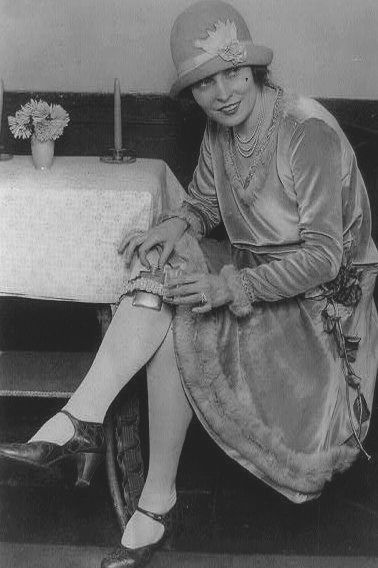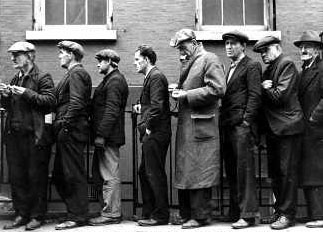Mon 27 May, 2013
WOODBURY
Comments (0) Filed under: Face Powder BoxesTags: 1922, 1929, Black Tuesday, Daisy Buchanan, East Egg, Great Depression, Jay Gatsby, Nick Carraway, West Egg
The Woodbury Face Powder box depicts a young couple during the early 1920s — it’s not clear if they are on their way to a dance, if they have they become engaged, or if they are they embarking on a love affair. Whatever their relationship, for me they call to mind Jay Gatsby and Daisy Buchanan from F. Scott Fitzgerald’s Jazz Age novel, THE GREAT GATSBY.
The golden hue and soft pastels of the c. 1920 Woodbury box would ultimately give way to the bright colors and bold graphics of the Art Deco Era — just as stolen kisses and chaperoned dances would yield to frank discussions of sex, and uninhibited flappers doing the Charleston.
THE GREAT GATSBY is set in 1922, just as the “Roaring Twenties” were picking up steam. The end of WWI signaled the beginning of a social revolution characterized by enormous changes in the lifestyles, attitudes, and sexual habits of the generation who had survived the conflict. The younger generation had found the values of the older generation lacking in honesty and in fun.
Adding fuel to the revolutionary fire in the U.S. were two Constitutional Amendments: the Eighteenth Amendment which took effect on January 17, 1920 and established the prohibition of alcohol; and the Nineteenth Amendment which was ratified on August 18, 1920 and which gave women the right to vote.
In THE GREAT GATSBY Jay Gatsby and Daisy Buchanan represent a collision between old and new money and, additionally, the different ways in which men and women sought to achieve the American Dream. The nouveau riche Gatsby earned his wealth rapidly, in part through bootlegging; Daisy was a privileged daughter who made an advantageous marriage to become an even more privileged wife.
When Daisy was told that she had given birth to a daughter she offered up her interpretation of the American Dream for women:
‘All right,’ I said, ‘I’m glad it’s a girl. And I hope she’ll be a fool—that’s the best thing a girl can be in this world, a beautiful little fool.'”
Gatsby’s dream is to win Daisy, and he believes that in order to manage it he is going to require money — one hell of a lot of money. Nick Carraway, the narrator in the novel says of Gatsby:
“He hadn’t once ceased looking at Daisy, and I think he revalued everything in his house according to the measure of response it drew from her well-loved eyes.”
The dichotomy of old and new money and the pursuit of the American Dream are also represented by West Egg and East Egg. The two Long Island communities are separated ideologically by the condescension and suspicion of old money for new, and physically by a lake. Gatsby watches the lights of the Buchanan’s East Egg mansion from the shore of his West Egg estate as he holds fast to his dream of once again winning Daisy’s love.
Gatsby wouldn’t survive to play out his personal dreams; nor would he be around to witness the crash of the collective American Dream on “Black Tuesday”, October 29, 1929 when Wall Street would free fall into a decade of oblivion.
We can only hope that the sweet looking couple on the Woodbury powder box weathered the financial uncertainties of the Great Depression — I hate to think of them in standing in a bread line.




